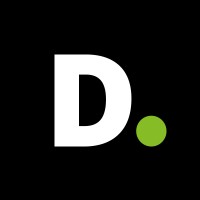So, a group of roofers, carpenters, and skaters all walk into a room… I promise you this isn’t the beginning of a bad joke. It’s the beginning of a research project conducted in 2013 by the Harvard Business Review.
Researchers presented the groups with the following question: how can roofers’ safety belts, carpenters’ respirator masks, and skaters’ knee pads be redesigned to increase their comfort and use? Each participant had to submit an answer for all three problems. So whose ideas won out? And why?
It’s a simple experiment with surprising innovative results that are informative when trying to understand how Deloitte has found success for decades. On this episode of Business X factors, all the answers will be revealed by Rich Penkoski, the CEO of Markets at Deloitte, who explains how unorthodox thinking helps lead to innovative strategies for the global consulting company and its clients.
Main Takeaways:
- Look Over the Fence: The idea of mixing malls and mines or makeup with surgical infections may not sound like a good idea, but bringing ideas and people that are analogous together, could make for surprising innovation and radical inventions. Look for fields that are more advanced in technology for inspiration or creative people who are old hat at coming up with out-of-the-box ideas and bring them into the fold.
- You Belong: One of the greatest obstacles to moving outside your comfort zone is the fear of looking like an imposter or poser. There are, however, benefits to being a novice with a fresh perspective. Many problems are solved with fresh ideas and a different way of thinking, and so-called outsiders offer that critical new perspective. That’s why companies should prioritize bringing in as many different kinds of people with as many diverse backgrounds as possible.
- Flatten the Hierarchy: Many companies are structured like a military chain of command. By flattening the organizational structure with fewer layers, communication can be clearer, decisions can be made more quickly, there is increased autonomy and empowerment for workers, and fresh ideas from younger workers can be heard.
- One Small Step: It is exciting to try to shoot out the lights by adopting new innovation, but if you aim too high and it is unachievable, you may just fall back to the old. Aim high but make sure that you build in enough runway so that you can appropriately adopt and adapt to a new solution. Taking a stepped or staged approach to innovation is often the more achievable route.
Key Quotes:
“One of the primary responsibilities we have to our clients is to be looking around the corner at what’s coming. So, I spend a very significant amount of my time looking at what are the issues on the horizon and what I personally pay a lot of attention to is what issues are we seeing in a specific industry that actually may have a bearing on a different industry.”
“I’m working with one financial institution today that doesn’t really necessarily want to know how they’re doing against other financial institutions. They want to know how they’re doing against tech companies. And so, as they’re thinking about some really innovative ideas in IT and the way they think about administering IT, they’re saying, ‘Look, yeah, I’m already pretty good in my segment here in financial services, talk to me about Google, talk to me about the big tech players and what’s happening there.’”
“We have embodied in our folks the notion that you cannot be unidimensional. So, if you look at our strategy professionals, they are remarkably tech savvy because they realize they can’t be relevant in the C-suite if they’re not. And likewise, our deep technologists understand the business context of what they’re implementing and what they’re designing. And so we have set just that baseline expectation across the entire organization where they are challenging the status quo.”
“I actually really work with my teams to say, ‘What are the issues we’re seeing? Are we equipped to meet them? And then what are we doing to actually cross-pollinate our best ideas so that when we talk to a client in a given industry, we are sensitive to the unique needs of their industry?’”
“We are nine-tenths externally focused, one-tenth internally focused. A lot of what we’re seeing is we come together, and we start saying, okay, we’re starting to see clients really struggle with the pace with which they’re migrating to the cloud, or, we’re seeing talent shortages in certain areas. That’s really where that’s really, what’s fuelling our innovation.”
“We are spending a lot of time orienting our services to outcomes and not inputs. Where the traditional consulting model is: how long is it going to take and how many people is it going to take to get it done? We would say, look, that model is kind of outdated, right? You’ve really got to talk about what’s the outcome that we need to achieve, and how much is it gonna cost to get there and how fast can I get there? And what is, most importantly, the value I’m going to get? And so, we are very keen on trying to redefine that value equation for our clients.”
“We pride ourselves on really getting ourselves steeped into the culture of the clients that we serve so that we can actually give them true advice to say, ‘You may have aspiration X. We think that’s not nearly far enough based on what we’ve seen your culture able to do, you should aim higher or, you know what, you have aspiration X, but it’s going to take two steps to get there right. Because ultimately if you can’t stay at the place you’re trying to get to, all you’re going to do is revert back to the ways of the old.’”
“We keep this organization very flat. I want to hear what our new college grads have to say when we’re trying to solve a business problem, as much as I want to hear about what a new partner is saying…What we instil in our people, the way we interact with them, that’s really where you create this environment for continuous learning and it feeds on itself.”
Bio:
Rich Penkoski is a principal and deputy CEO—Markets for Deloitte Consulting LLP, responsible for defining and delivering the industry-specific insights and solutions clients need to solve their most complex business challenges. He also serves on the Deloitte Consulting Executive and Management Committees, the Deloitte USA Board of Directors and as chairman of the Board, Deloitte Consulting Management GmbH & Co. KG.
Rich has led many of Deloitte’s largest Finance and IT-enabled transformation programs and has served many of Deloitte Consulting’s most significant clients across Financial Services, Retail, and Consumer Products. He believes that measurable and sustainable value is only achieved when strategy, implementation, and ongoing operations are delivered through a combination of business acumen, technical excellence, and extensive industry depth.
—
Business X factors is produced by Mission.org and brought to you by Hyland.
For over a decade, Hyland has been named a Leader in the Gartner Magic Quadrant for Content Services Platforms, leading the way to help people get the information they need when and where they need it. More than half of 2019 Fortune 100 companies rely on Hyland to help them create more meaningful connections with the people they serve. When your focus is on the people you serve, Hyland stands behind you. Hyland is your X factor for better performance. Go to Hyland.com/insights to learn more.




